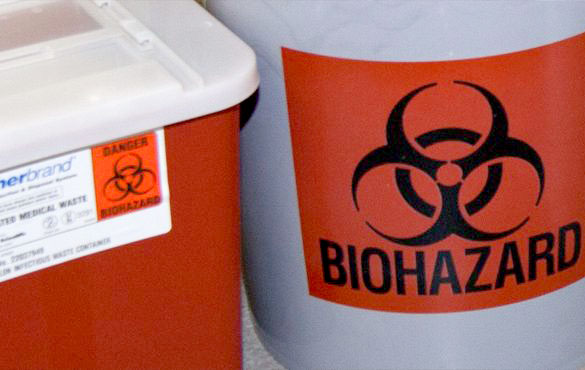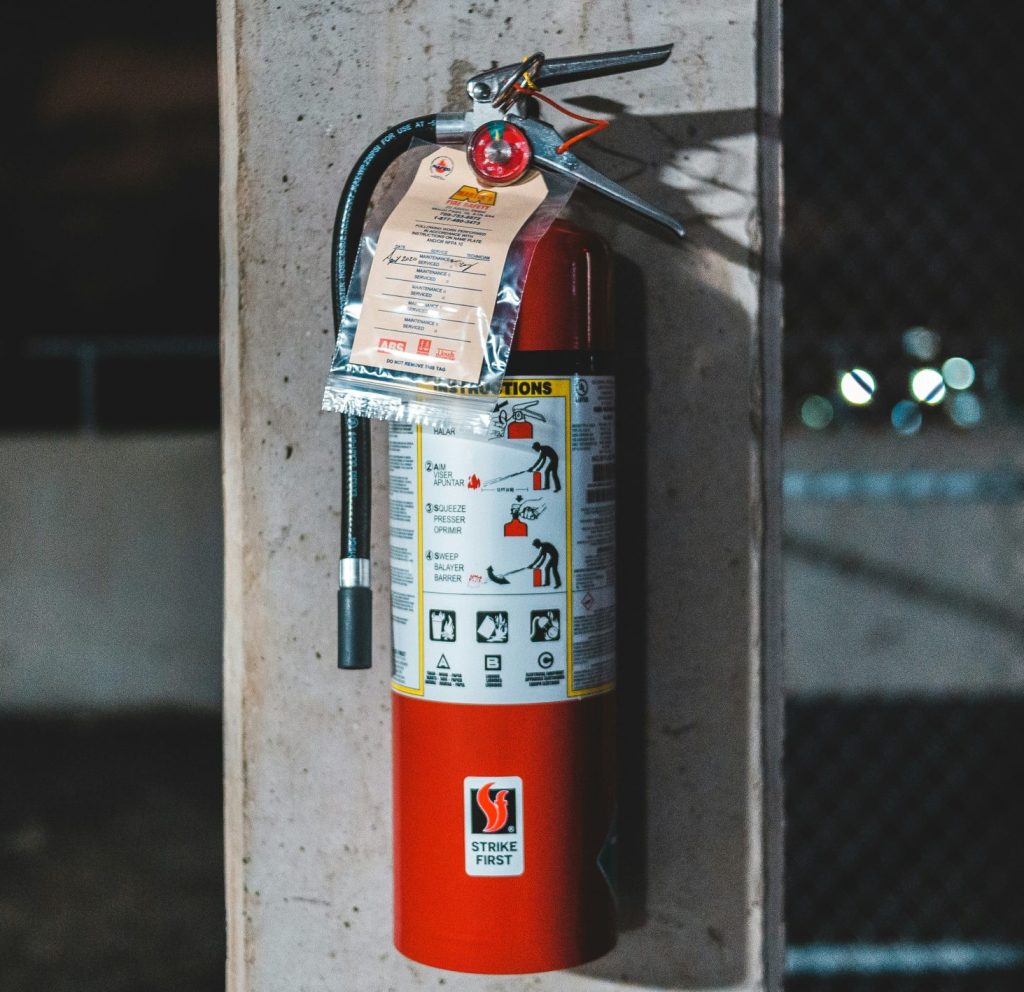Lasers
Laser safety begins with training! All users of Class 3B and Class 4 lasers must take Laser Safety Basic Training. The laser user must then be trained for lab-specific procedures by the lab director (faculty/lab managers/supervisors) or laser safety supervisor.
Standard Operating Procedures, Guidelines, and Manuals
The Laser Safety Program Standard Operating Procedure Template may be required for your research operation, depending on what type of research you are performing, the hazards you will be exposed to, and the engineering controls you are implementing.
Laser Hazards
Lasers are classified based on their capabilities to produce injury to personnel. The classification system is broken down into seven categories: 1, 1M, 2, 2M, 3R, 3B, and 4.
| LASER CLASS | HAZARDS | EXAMPLE |
| 1 | None |
|
| 1M | Considered to be incapable of producing hazardous exposure conditions during normal operation unless beam is viewed with collecting optics (e.g., telescope) | Fiber optic communication system |
| 2 | Emits in the visible portion of the spectrum (400-700 nm) and eye protection is normally afforded by the aversion response | Supermarket barcode scanner |
| 2M | Same as Class 2; however, is potentially hazardous if viewed with collecting optics (e.g., telescope) | Leveling instruments and some construction industry lasers |
| 3R | Potentially hazardous under some direct and specular reflection viewing conditions if the eye is appropriately focused and stable | Laser pointers |
| 3B | Eye injury from:
| Research lasers |
| Class 4 |
| Research lasers |
Training and Education
Required Training
The EHS BLS005w Laser Safety Basic Training (Online) is required before operating a Class 3B or Class 4 laser at the University of Michigan (U-M). All laser users including technicians, engineers, maintenance and service personnel, and any other persons working with or potentially exposed to Class 3B and Class 4 laser radiation.
Training for Physics Department Staff
Additional training is required for individuals working with Class 3B and Class 4 lasers in the Physics Department. Contact Steve Katnik (skatnik@umich.edu) for this training.
Training for Ultrafast Optical Science Staff
Additional training is provided at the Center for Ultrafast Optical Science (CUOS) for those using the lasers at CUOS. Contact John Nees (nees@umich.edu) for this training.
Embedded Laser Safety Training (EHS_RSS044w)
This online training provides laser safety training for users of embedded laser systems including confocals, cytometers. mass spectrometers, laser cutters and more. This training includes information about lasers and their dangers, embedded lasers and their advantages, injury response procedures, and safety precautions when using equipment containing an embedded laser.
Laser Disposal
Because the improper use of Class 3B or Class 4 lasers can create personal hazards to the users as well as long term liability to the U-M, it is important to maintain an accurate accounting of the devices to ensure no exposures occur. A lab director must notify the EHS Laser Safety Officer (LSO) when a Class 3B or Class 4 laser or laser system will be relocated, transferred to another lab director, sold or transferred to another institution, or sent to Property Disposition as surplus equipment. Follow the instructions provided in the Laser Disposal Program Guideline.
Laser Pointers
Laser pointers are becoming increasingly popular and are used in a variety of ways ranging from use in teaching environments to toys to entertain our pets. While popular, laser pointers can be hazardous if not used properly and dangerous if used in unintended ways – for example due to concerns over impacts on pilots, some countries have banned over the counter laser sales. Most laser pointers are considered Class 3R laser products meaning their power “rating” range is from 1-5 milliwatts (mW); however the rating system is often inaccurate. Research has demonstrated that laser pointers with power less than 5 mW that conform to specifications can be used safely in the classroom and in other settings if used as directed.
Although laser pointers are not regulated at U-M they must be used responsibly and as intended.
Hazard of Laser Pointers
The hazard potential from laser pointers is generally exposure to unprotected, unexpected eyes of individuals who might be exposed to the open beam. The average person’s blink response is 0.25 seconds; also called the aversion response. That is the body’s natural defense mechanism and generally protects the eye. This generally limits the unintentional beam exposure to a safe level. If there is continual exposure or if someone looks into a 5 mW beam for more than 0.25 seconds, the exposure would exceed the Maximum Permissible Exposure potentially damaging the retina. The higher the exposure, the greater the risk. There is generally no risk as a skin hazard.
Precautions
When you use a laser pointer you should follow these precautions:
- Buy a laser pointer that is FDA approved – Power output must not exceed 5 mW. It should have a danger or caution label indicating power output, wavelength, and aperture indicator.
- Never point it at another human (or animal) – these are not toys to be used lightly
- Never look directly into the beam
- Never aim a laser pointer at a reflective surface – reflected laser light can also cause a potential hazard
- Do not view a laser pointer using an optical instrument such as a microscope or binocular
contact the EHS Laser Safety Program at EHS-lasersafety@umich.edu





